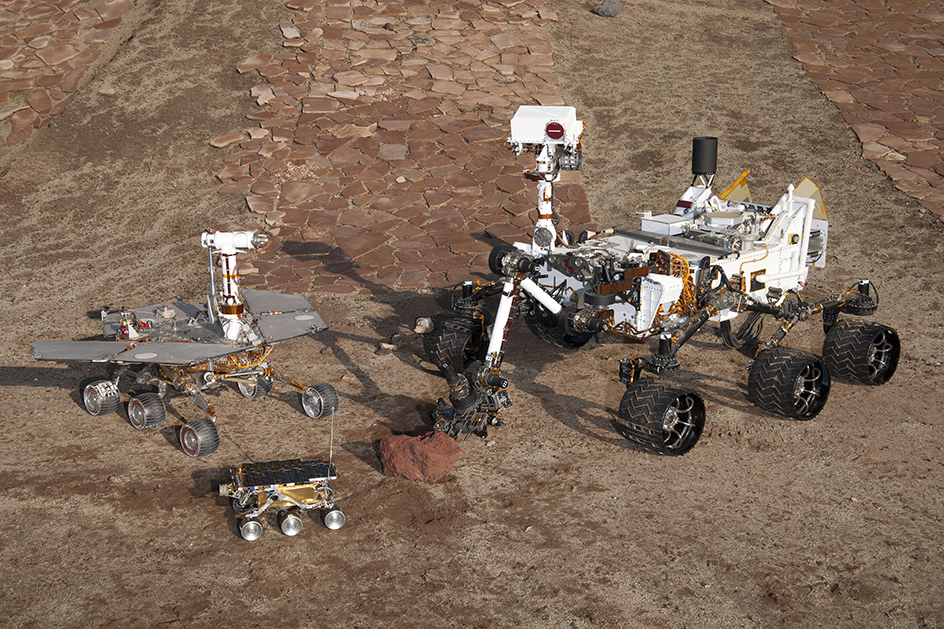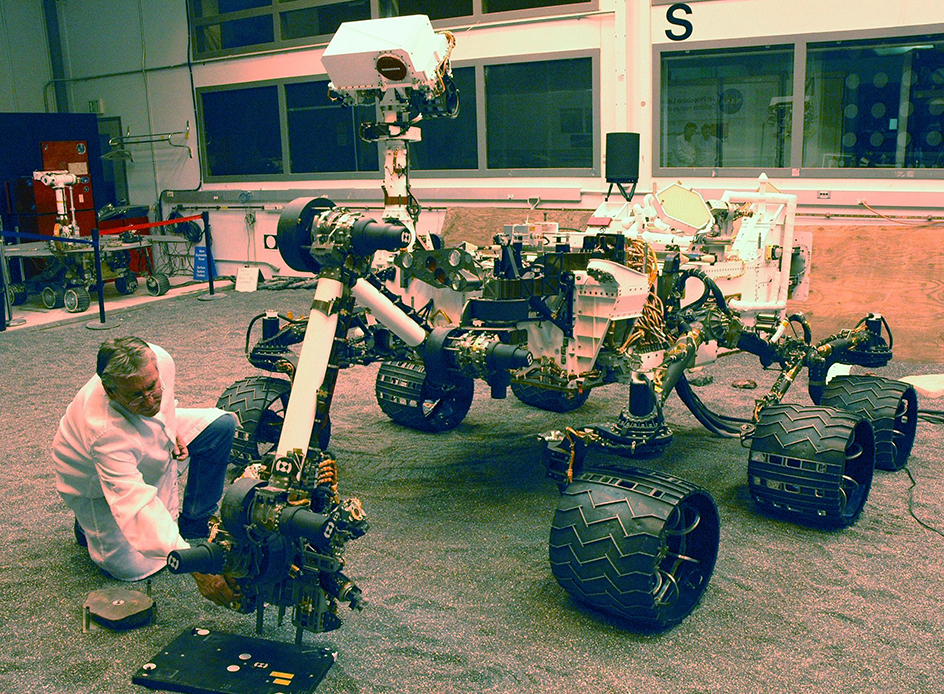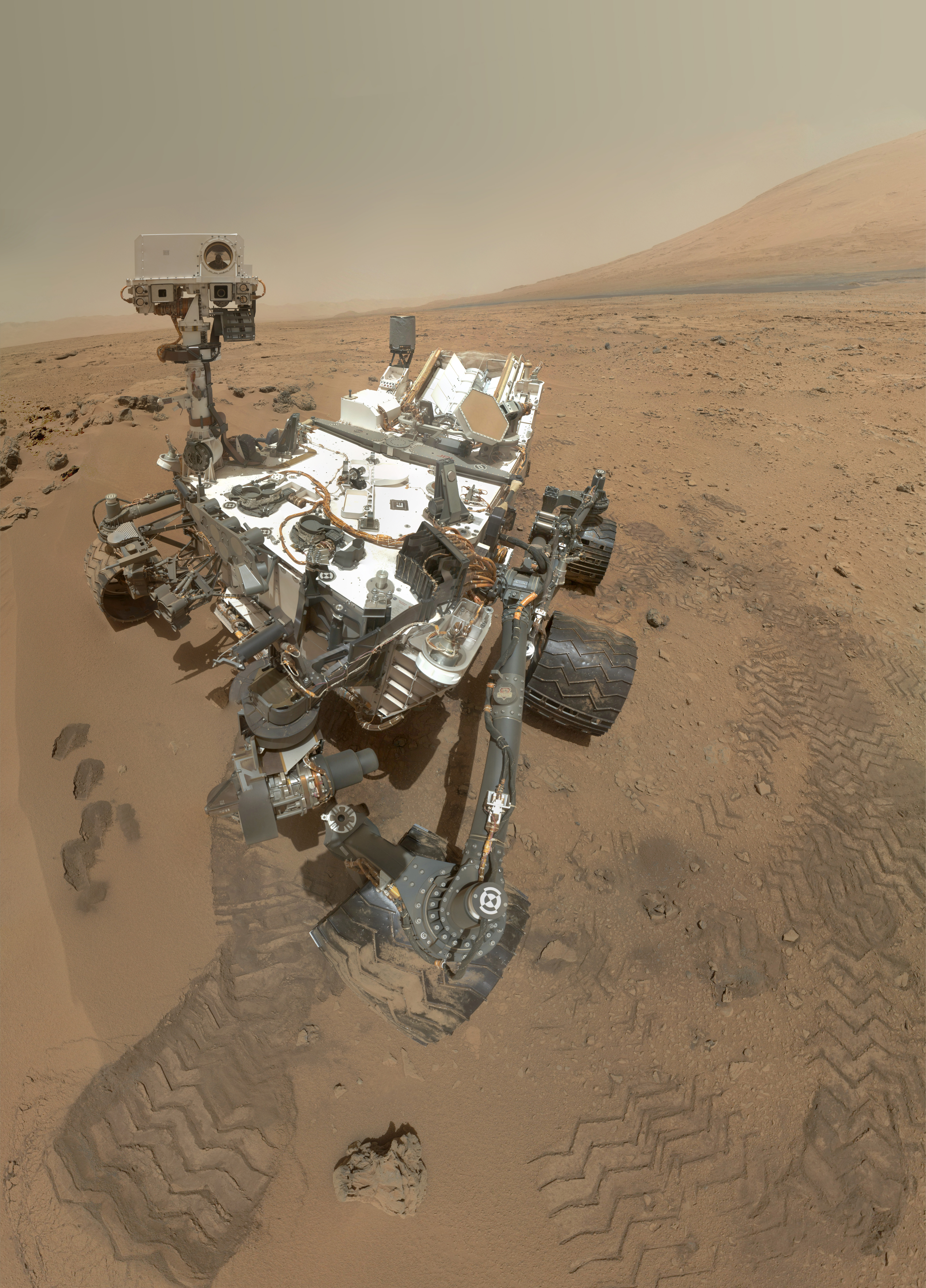Mars Science Laboratory is a robotic space mission to the planet Mars. It consists of a six-wheeled rover called Curiosity. Curiosity is one of the largest rovers ever sent to Mars. It is the size of a small automobile and weighs nearly 1 ton (900 kilograms). Curiosity is about five times as heavy as either of the rovers Spirit and Opportunity, which landed on Mars in 2004. The goal of the Mars Science Laboratory is to determine whether the rover’s landing site ever held certain conditions supportive to living things. Such conditions include the presence of liquid water; a source of energy, such as sunlight; and nutrients, including the chemical elements nitrogen, phosphorous, and oxygen. The rover was designed to examine rocks and soils for evidence of these conditions. Curiosity was built by the United States National Aeronautics and Space Administration (NASA) in collaboration with agencies in several other countries. The other countries include Canada, Russia, and several European countries.

Curiosity carries many sophisticated scientific instruments. They include color cameras and a laser mounted atop a long mast. The laser can vaporize small pieces of rock from a distance of up to 23 feet (7 meters). Curiosity can then analyze the vaporized material to determine the rock’s chemical composition. The body of the rover holds instruments that can analyze samples for different minerals, elements, isotopes, and organic (carbon-based) molecules. Curiosity also has a 7-foot (2.1-meter) robotic arm that can make up-close measurements of the surface, drill into rocks, and scoop up soil.

Curiosity launched on Nov. 26, 2011. The rover landed on Aug. 6, 2012, in a depression called Gale Crater. The craft landed using a novel system called a sky crane. A parachute slowed the craft after it entered the Martian atmosphere. A set of rockets then lowered the rover to the ground on a tether. Curiosity is designed to drive about 12 miles (20 kilometers) during a mission lasting one Martian year, about 98 weeks.

During the mission’s first two years, the rover was able to test and report on samples collected as it moved across Gale Crater. Curiosity gathered data used to characterize an ancient river system; identify igneous rocks with an unanticipated, Earthlike composition; and reveal the detailed composition of a typical Martian soil. All of the results strongly indicated that Mars was habitable early in the planet’s history.

In 2014, NASA extended the mission, enabling the rover to continue on to Mount Sharp, a peak in the middle of Gale Crater. In December, the rover’s science team announced two significant discoveries. The first announcement was the confirmation of a wet environment in Mars’s past capable of sustaining life. The second discovery was the detection of a burst of methane gas from inside the planet. Methane can be produced by certain types of bacteria on Earth, hinting at the possibility of basic life forms living beneath the Martian surface. However, methane can also be produced by chemical reactions not involving life.

In 2015, the rover detected nitrogen in forms that could be absorbed by living things. Nitrogen is necessary for all known forms of life. But it usually occurs as nitrogen gas (N2), which is extremely difficult for organisms to use. Curiosity found compounds containing nitrogen and oxygen on the surface of Mars. Most forms of life on Earth use these types of compounds to build their tissues.
In June, 2018, NASA announced that Curiosity had detected organic molecules in rock sampled by drilling just below the surface of Mars. The rock, a kind of mudstone, was deposited around 3.5 billion years ago when this region of Mars was covered with water. Below the surface, the sediments were shielded from ultraviolet (UV) radiation that would break down any organic molecules exposed on the surface. Organic molecules are one sign that life may have once existed on Mars. However, organic molecules can also be produced by processes on Mars that do not involve life. Scientists cannot tell if the organic molecules detected in these ancient rocks were formed by living organisms or other nonbiological processes.
See also Mars (Observation by spacecraft); Mars 2020; Space exploration (Exploring Mars).
